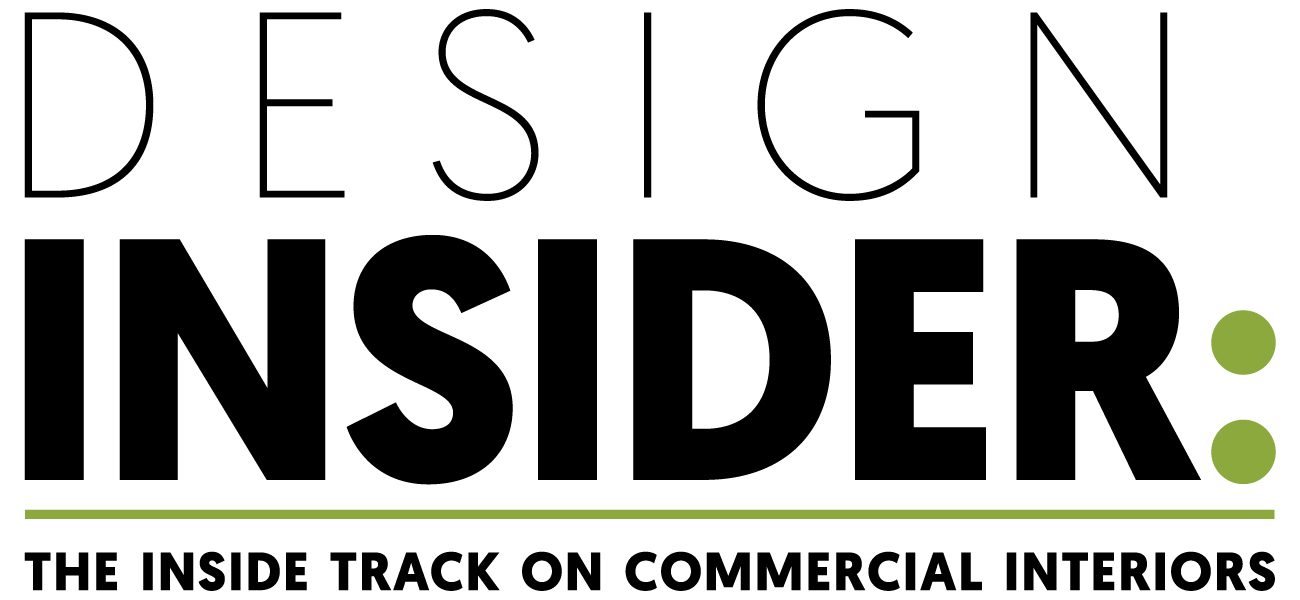A Thoughtful Exploration of Colour, Culture and Craft at Roca London Gallery
Materiality and cultural resonance took centre stage at Roca London Gallery on the evening of Monday 15th April, as guests gathered to hear Italian designer and researcher Roberto Sironi present his ground-breaking research for LAUFEN’s Colour Archaeology project.
Hosted within the atmospheric setting of the gallery’s latest exhibition, the event drew an engaged audience of designers, architects, and industry professionals—all eager to explore how ancient materials and colours can inform contemporary design.
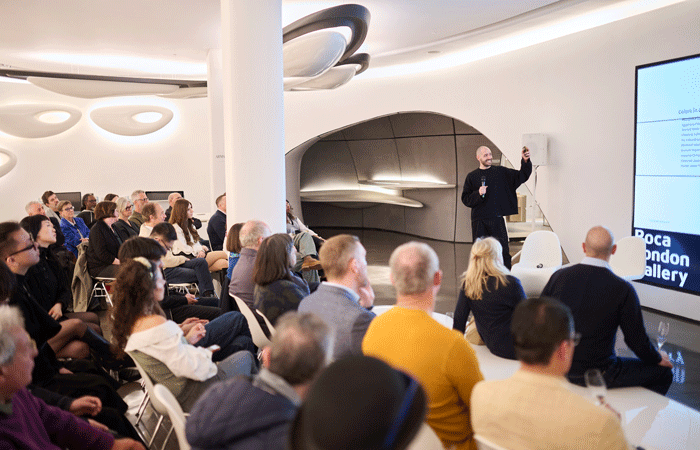
The evening began with a warm welcome and introduction from LAUFEN’s Head of Brand and Communications, Emma Mottram, as attendees settled into their seats with drinks in hand. The Zaha Hadid designed space was full, setting the tone for an inspiring presentation.
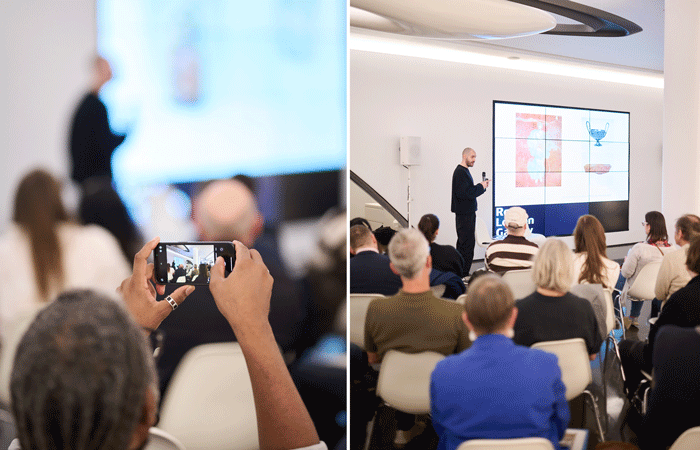
Roberto Sironi took to the stage to deliver a unique, captivating and in-depth talk, structured around three key stages of his project. He began by sharing his extensive research journey, drawing from over 10,000 historical artefacts and illustrating how ceramic examples across different time periods each tell a story through their use of colour.
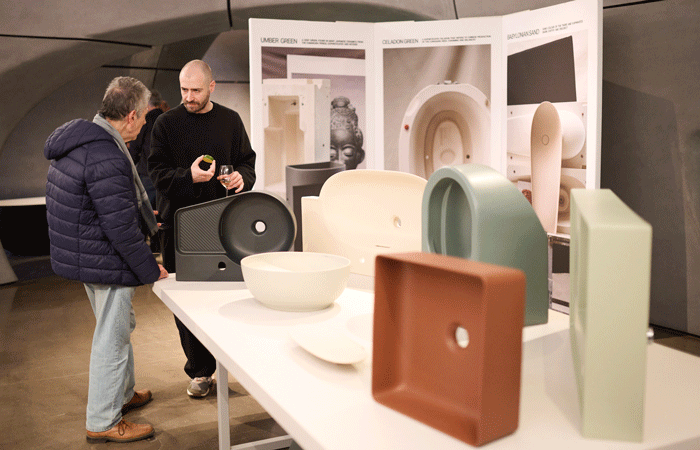
In the second stage, he revealed the final palette—twelve colours inspired by classical cultures and expertly interpreted with his contemporary eye, nine of which have now been applied to LAUFEN’s contemporary collections.
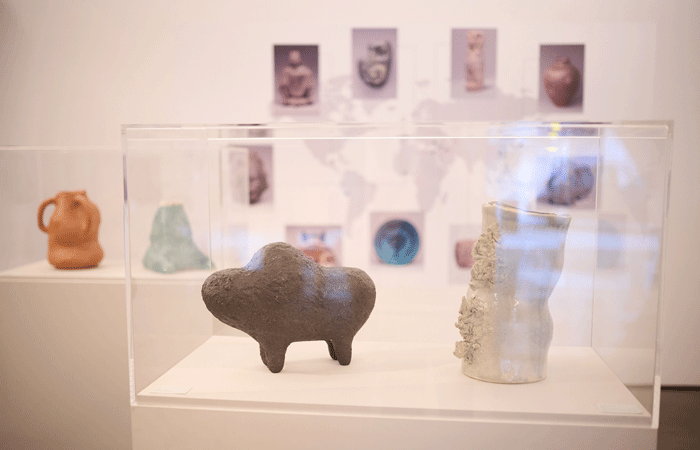
Finally, Roberto spoke about the ceramic vessels he handcrafted using ancient techniques and colours, offering a rare glimpse into the physical challenges and creative rewards of working so closely with material and process.
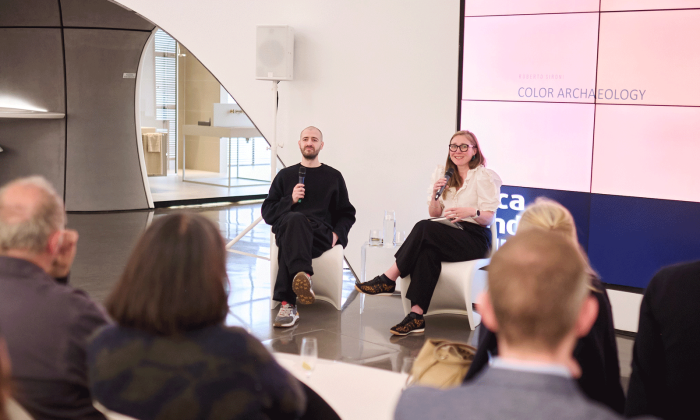
When Roberto finished his presentation, he was joined by Alys Bryan, Editorial Director of Design Insider, for a short conversation that offered further insight into his process, inspiration, and the thinking behind his latest project.
When asked whether research had always been central to his design process, Roberto Sinori explained that it has played a fundamental role since 2014, when he began collaborating with the Polytechnic School of Milan. “Research is important because it’s a way to go deep into the past, into materials, into meaning,” he said. For Roberto, design is not about following trends, but about creating value by building bridges between archaeology, anthropology, and contemporary design.
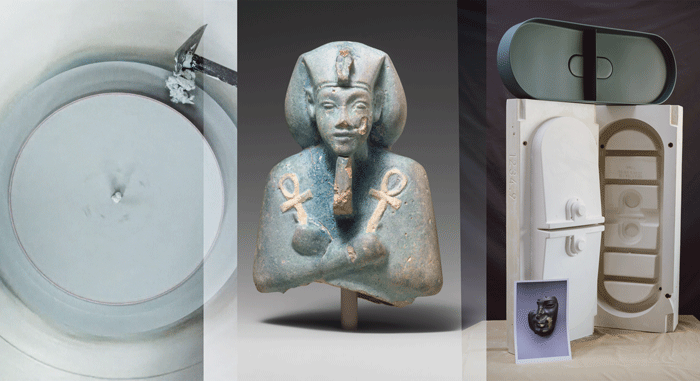
While formal training gave him a foundation in research methodology, he believes that meaningful research also comes from lived curiosity. “Museums, exhibitions, books—these are all sources. What matters is how you frame what you find.” He described research as something natural, even easy, if approached with an open mind and structured approach.
Seeing ancient artefacts in person, rather than relying solely on digital or printed sources, was crucial to his work. “Seeing them is everything. The touch, the colour, the emotion—you can’t get that from a screen,” he said, recalling visits to museums in Peru, Japan, India and the UK. “You go, you look, you absorb. That’s where it begins!”
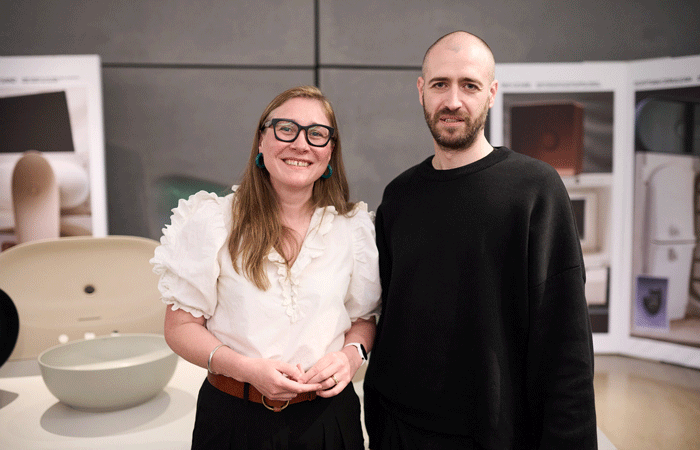
It became clear that Roberto finds joy across all aspects of his projects—but particularly in the tactile and cultural dimensions. “I’m a designer, but I love to work with my hands. Making the ceramic pieces myself was one of the most beautiful—and most difficult—parts,” he shared. “Ceramics is a capricious material. You might spend a month shaping a piece, only for it to explode in the kiln. It’s frustrating—but rewarding.”
This project marked his first hands-on experience working with ceramic production directly, and he chose to use challenging, ancient techniques. “I added layers of difficulty on purpose,” he laughed. “But it’s important to push myself. That’s what stimulates me.”
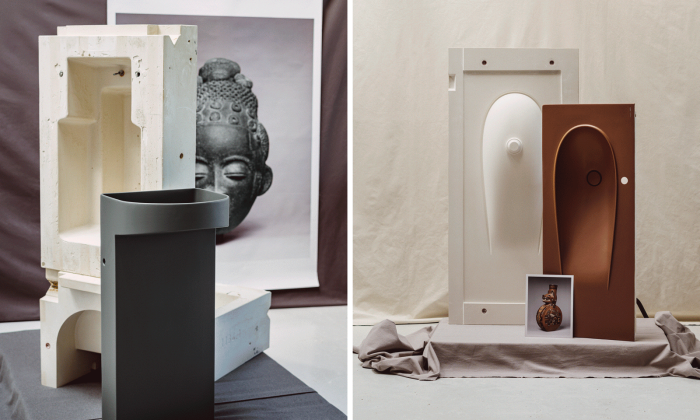
The colour palette he created—twelve shades inspired by ancient cultures, nine of which were selected for production—was designed with a contemporary purpose in mind. Rather than reproducing historical tones exactly, Roberto carefully translated them with a contemporary sensitivity. “We wanted to give designers a tool that allows them to embed cultural value into their projects. If you’re working on a hotel in Beijing, for instance, you can choose a palette rooted in Chinese heritage. It’s about offering a sophisticated way to connect place and design.”
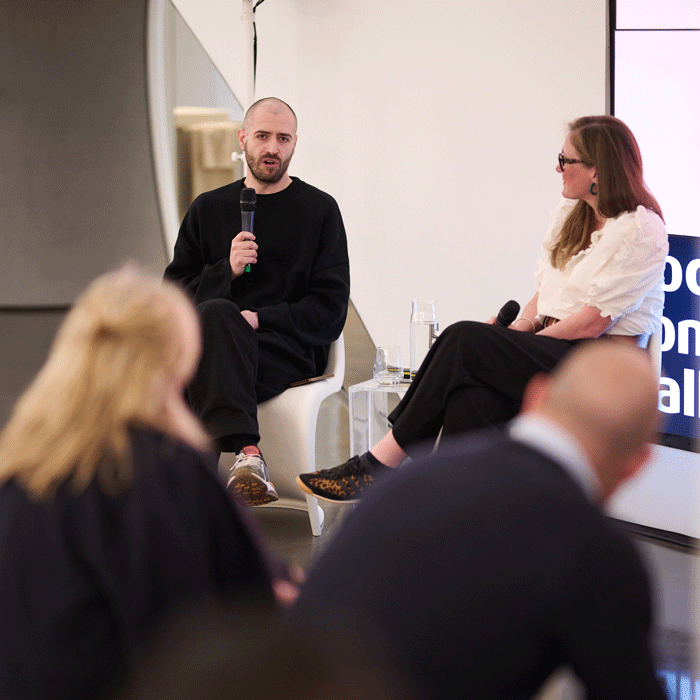
This philosophy responds directly to the growing need for contextually rich design, particularly in the hospitality sector. “Design today must reflect the spirit of a place. Colour is one of the most powerful ways to do that.”
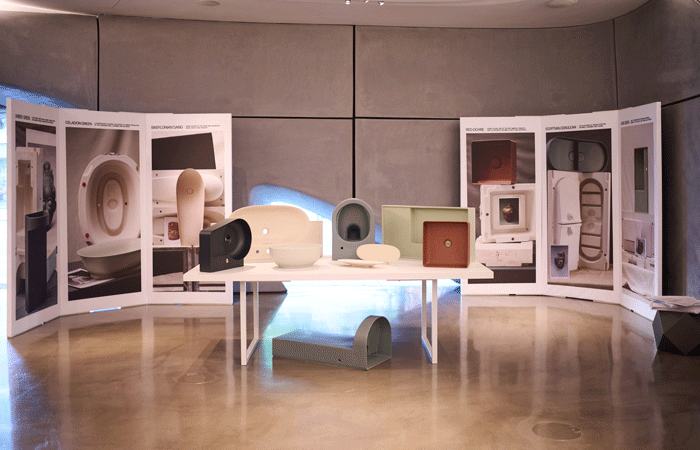
Alys asked about the project’s sustainability credentials, specifically the use of a new electric kiln that dramatically reduced CO2 emissions. Roberto spoke with pride about the technical challenges overcome in the production process. “I really appreciate how the manufacturer understood and respected the project. The colours were recreated with incredible fidelity, despite the complexity of electric firing. It took over a year to get it right.”
During the audience Q&A, Roberto was asked whether his colour choices were driven by cultural origin or practical application. “I tried to design a timeless palette. I didn’t invent any colours—these are all part of our shared history,” he said. “I just selected and reinterpreted them.”
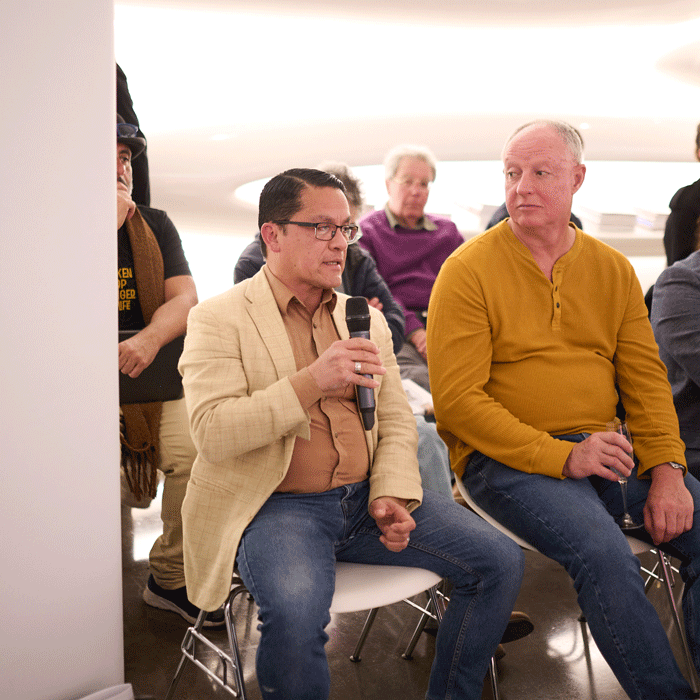
He challenged the overuse of white ceramics in domestic interiors, suggesting that colour could—and should—play a more prominent role in our homes. “We use colour everywhere else—floors, walls, textiles—why not ceramics?” He spoke of introducing okra tones into his own bathroom, confident they would remain relevant for decades. “These aren’t trend colours—they’re rooted in time.”
For Alys, this thoughtful balance of history, materiality, and innovation stood out as a defining quality in Roberto’s work. It’s this depth that offers designers and architects not only beautiful tools—but meaningful ones.
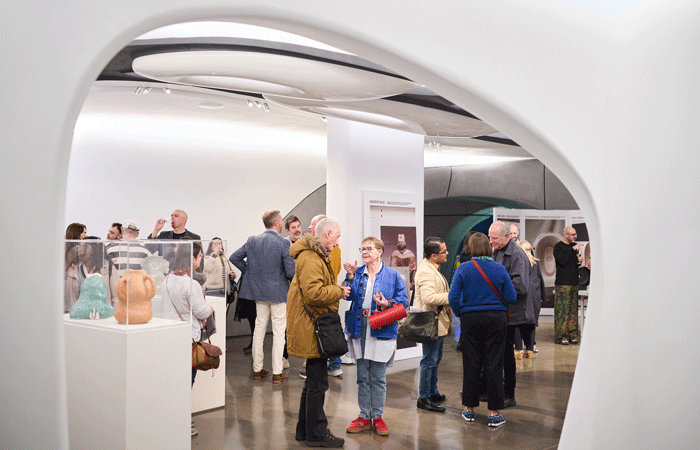
Ultimately, Roberto sees colour not just as an aesthetic decision, but as a cultural and emotional one. “We need to complete our domestic landscape,” he said. “And colour is essential to that.”
After the presentation and conversation, guests enjoyed the opportunity to explore the exhibition in more detail, accompanied by drinks and canapés. Conversations flowed as attendees viewed the artefacts and vessels, alongside the LAUFEN products finished in the new colour palette.
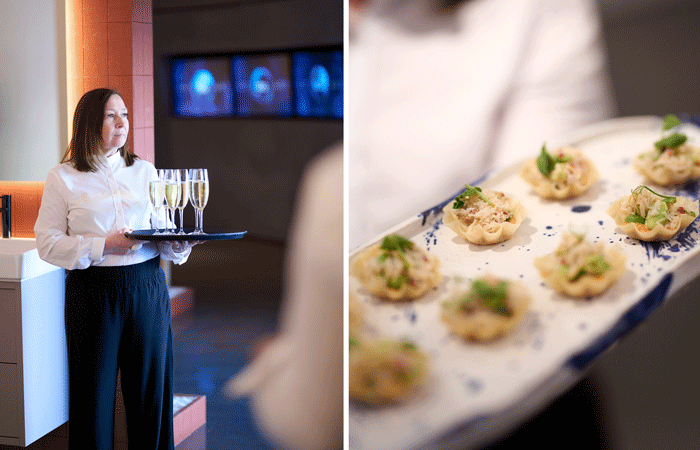
Colour Archaeology remains open at Roca London Gallery until 26th April 2025, offering a final chance to experience this thoughtful intersection of archaeology, design, and craftsmanship firsthand.
Find Laufen on Supplier Finder
Supplier Finder is the UK’s only search platform for accredited suppliers of commercial interior furnishings.
At Supplier Finder, our mission is simple: to help you find the perfect commercial furnishing suppliers for your interior schemes and projects. We understand the importance of having confidence in the suppliers you specify and the products that bring your designs to life. That’s why each supplier featured on our platform is accredited through Commercial Interiors UK’s rigorous membership application process. This ensures that you engage with only the best in the industry!
